Diversity and Change
The constantly changing world and expansion of European, American and Japanese influence affect the social lives of the peoples of Oceania while different cultures explain the world in varied ways.
However, many of the people of Oceania have resisted cultural colonialism and the invasion of capitalism.
Since the sixteenth century, many countries such as Portugal, Spain, Holland, England and France have spent time in the Pacific islands and carried out campaigns in the South Pacific. In these island areas, they gradually invaded local societies and carried on economic and missionary activities.
At the end of the nineteenth century, with the participation of Germany, Japan and the U.S., countries engaged in fierce colonial competition and established varieties of colonial governments that changed the traditional societies in Oceania.
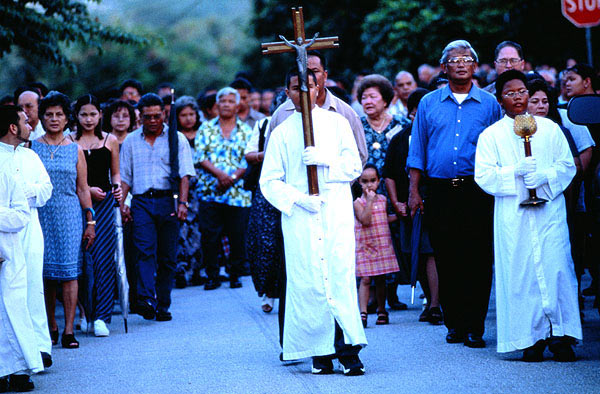
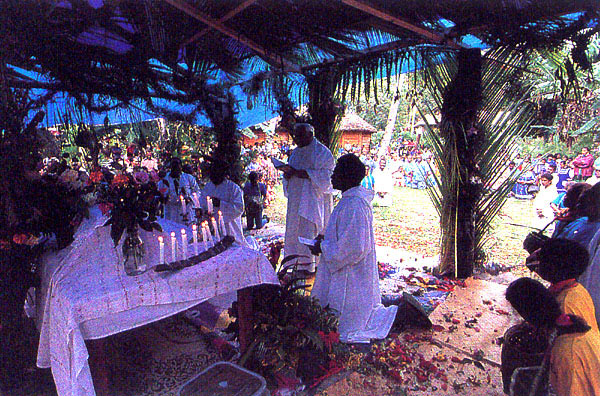
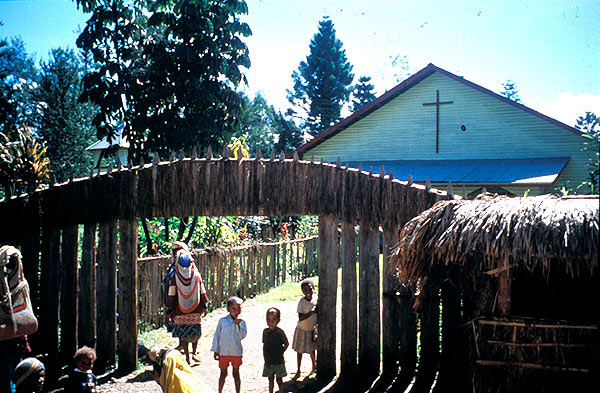
According to statistics on tides around the world, in the last ten decades, the average sea level has risen 15 centimeters. The rise in sea level has accelerated over the last ten years, a consequence of the greenhouse effect that has led to global warming.
Greenhouse gases such as carbon dioxide are released into the atmosphere due to the burning of fossil fuels. The carbon dioxide reflects the sunlight and heat is retained, resulting in rising temperatures and sea level, and the melting of ice at the South and North poles. Even the water cycle has changed. The above factors all speed up the greenhouse effect and have lead to submerged islands in Oceania and the threat of species extinction.
During the past 500 years, easily exploited energy sources on the earth's surface have been gradually exhausted. The "economic development" of Western countries means invasion and destruction of indigenous culture, and plundering of natural resources around the world (gold, leather, sugar, coffee, cocoa, tropical fruit, rubber, oil, rare minerals and timber). As for the processing of dangerous chemical and nuclear waste materials, so-called "remote areas" and "sparsely populated indigenous areas" are often chosen.
In the last ten years, many countries have joined the trend of cultural tourism, which "introduces the unique customs of indigenous peoples and exotic destinations to the public." Cultural tourism may lead to structured changes in Aboriginal economies, culture and ecology, including the loss of national ideology and original faith, deprivation of homelands and natural resources, environmental pollution and disruption of living order.
However, under the economic prospects and need for money, many Aboriginals still have high expectations concerning tourism and treat their own culture and living environment as commodities to satisfy tourist curiosity.
The peoples of Oceania are not only losing their cultural traditions and languages but are also confronted with the challenges of maintaining their identity in modern times and sometimes with a lack of political power. Retaining cultural identity, although a difficult goal to reach, can be achieved as demonstrated in the example of Chateau de Chantilly in New Caledonia.
Renzo Piano reveals local culture and architecture. However, the goal is not just to copy the housing style of Kanak but also to attempt to express kanak culture in modern language.
First, local plants are planted around the cultural center in accordance with the architecture. Plants can be food and medicines and also indicate boundary lines and entrances. A series of landscape features surrounding the architecture and lagoon closely match the land. The shortcut also manifests the meaning of plants and beliefs for visitors, such as the origin of ancestral heroes, the life of Kanaka, reincarnation and spirits.
The main style of the architecture is characterized by the inner arch structure with modern lumber and metal chips. The desirable housing style symbolizes the remodeled Kanak culture.
The purpose of building Chateau de Chantilly is to reveal Kanak culture and real Kanaka to the world. The chairman of Chateau de Chantilly claims that when people arrive here, they will find that the architecture is definitely unique and modern, but deeply infused with history.
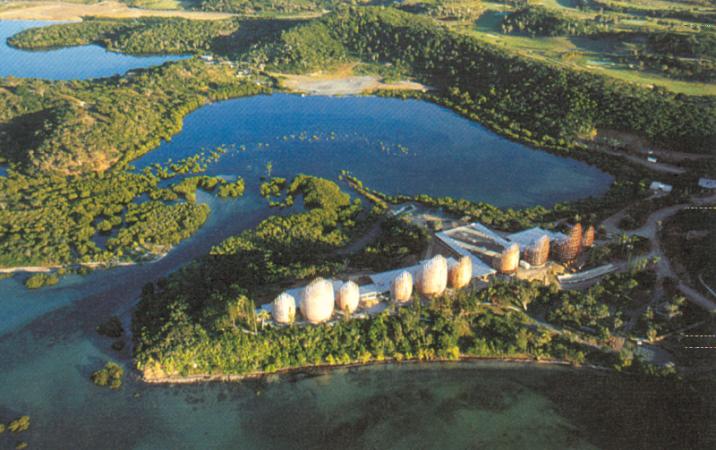

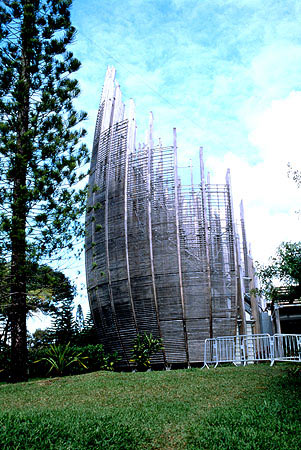
In the past, numerous explorers were fascinated with Oceania. Western explorers expanded the scope of their countries' colonies in Oceania. The peoples of Oceania have been on the edge of the development of human history, from beginning to end. Therefore, we should try to record the multiple histories of Oceania and present them to the public.
The peoples of Oceania have straight-line and spiral perspectives of history and historical construction combines with cultural notions and social construction. Because of this, lives in the past, present and the future are shown differently in the context of culture The events concerning the arrivals of outsiders and inter-ethnic clashes with one another are chronicled in ethnic history. For example, the life of British explorer James Cook has had an influence on Hawaiians belief in Lono.
The social situations of the peoples of Oceania, including ethnic independence, shipments, revival of language forms (language, food, clothes, and artifact), and religious conversion all carry their peculiar cultural notions and reveal Western effects over a long period of time. Other clear examples are new housing styles, which differ from the traditional ones and the construction of Chateau de Chantilly in French New Caledonia.
The evolution of Oceania's culture and the different interpretations of how Western culture affects them, provide very different points of view to reveal relationships between people and country, people and others, globalization, local position, and so on.
Taiwanese Aboriginals take the life and culture of Oceania seriously, and people are learning to pay heed to the difference between globalization and localization.